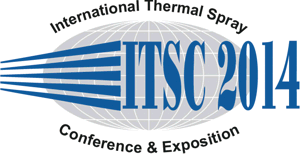
|
3839 |
|
Thursday, May 22, 2014, Hall A 11:00 AM HVOF- / HVAF-Spraying |
|
Comparative investigation of WC-CoCr and Cr3C2-NiCr coatings deposited by various HVOF and HVAF torches |
|
Giovanni Bolelli* / Department of Engineering "Enzo Ferrari", University of Modena and Reggio Emilia, Italy Lutz-Michael Berger / Fraunhofer-Institut für Werkstoff- und Strahltechnik (IWS), Germany Heli Koivuluoto/ Department of Materials Science, Tampere University of Technology, Finland Luca Lusvarghi/ Dipartimento di Ingegneria Enzo Ferrari , University of Modena and Reggio Emilia, Italy Christophe Lyphout/ Department of Engineering Science, University West, Sweden Per Nylén/ Department of Engineering Science, University West, Sweden Petri Vuoristo/ Department of Materials Science, Tampere University of Technology, Finland Stephan Zimmermann/ H.C. Starck GmbH, Germany |
|
Thermally-sprayed WC-CoCr and Cr3C2-NiCr coatings have gained significant industrial use for wear and corrosion protection. Their properties and service behaviour, however, critically depend on the deposition method. These coatings are usually sprayed by HVOF technology, to enhance density and interparticle cohesion while reducing thermal alteration. Recently, the High Velocity Air-Fuel (HVAF) technique has emerged as an alternative with the potential to further reduce thermal alteration and increase coating density. The availability of a wide range of HVOF and HVAF torches, each one having its own distinctive features, therefore calls for a systematic comparison between the properties of cermet coatings deposited by various techniques. In this study, WC-10Co-4Cr and Cr3C2-25NiCr cermet compositions were selected based on their industrial relevance; for each of them, one commercially available feedstock powder with finer particle size distribution and one with coarser size distribution were chosen. Coatings were sprayed onto carbon steel plates using three HVOF torches (Praxair JP5000, Sulzer-Metco Diamond Jet 2700, GTV K2) and two HVAF ones (Uniquecoat M2 and M3). Microstructure and hardness of the coatings were characterised by XRD, SEM and Vickers microindentation. Their corrosion behaviour, investigated by electrochemical polarisation, salt spray and corrodkote (ASTM B380-97) tests, highlighted significant differences as a function of both the deposition process and the feedstock particle size. Finer powders, sprayed using high kinetic energy processes such as the JP5000-HVOF and M3-HVAF torches, provided the best performances. The same coatings also possess significantly large compressive residual stresses and exhibited the best wear resistance both in dry sliding ball-on-disk tests, performed at room temperature and at 400 °C, and in dry sand-rubber wheel tests. No obvious correlation is found between hardness and wear resistance. It is also remarked that coatings with compressive residual stresses of lower magnitude or tensile residual stresses undergo extensive cracking at 400 °C. |